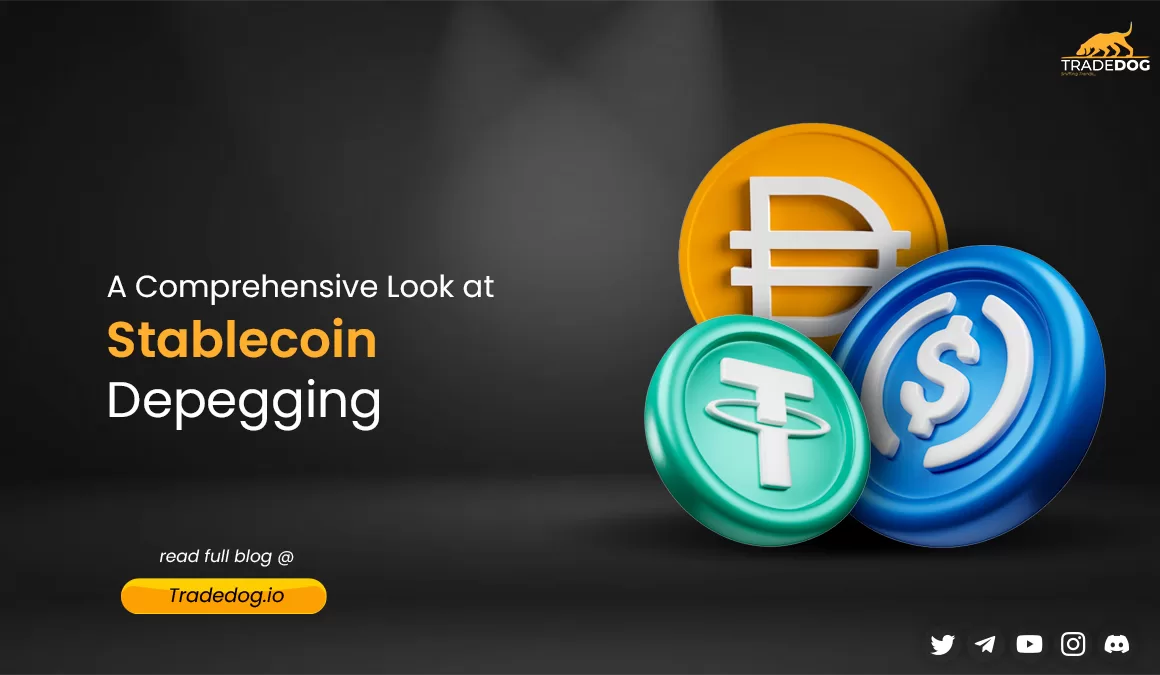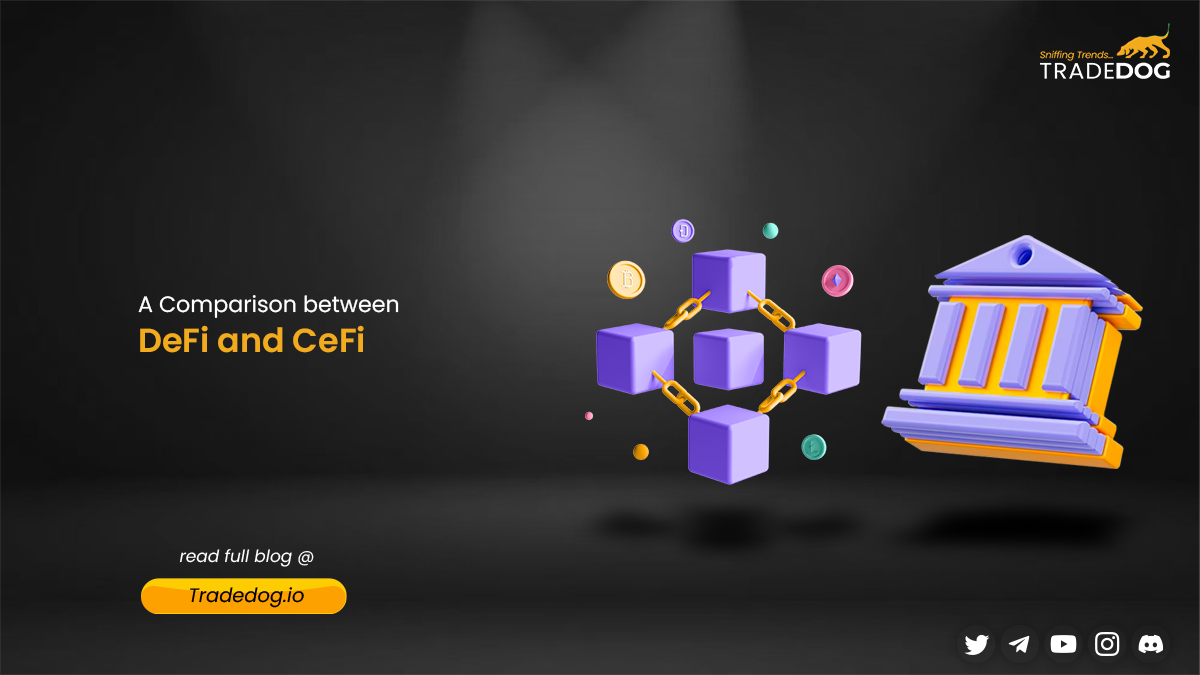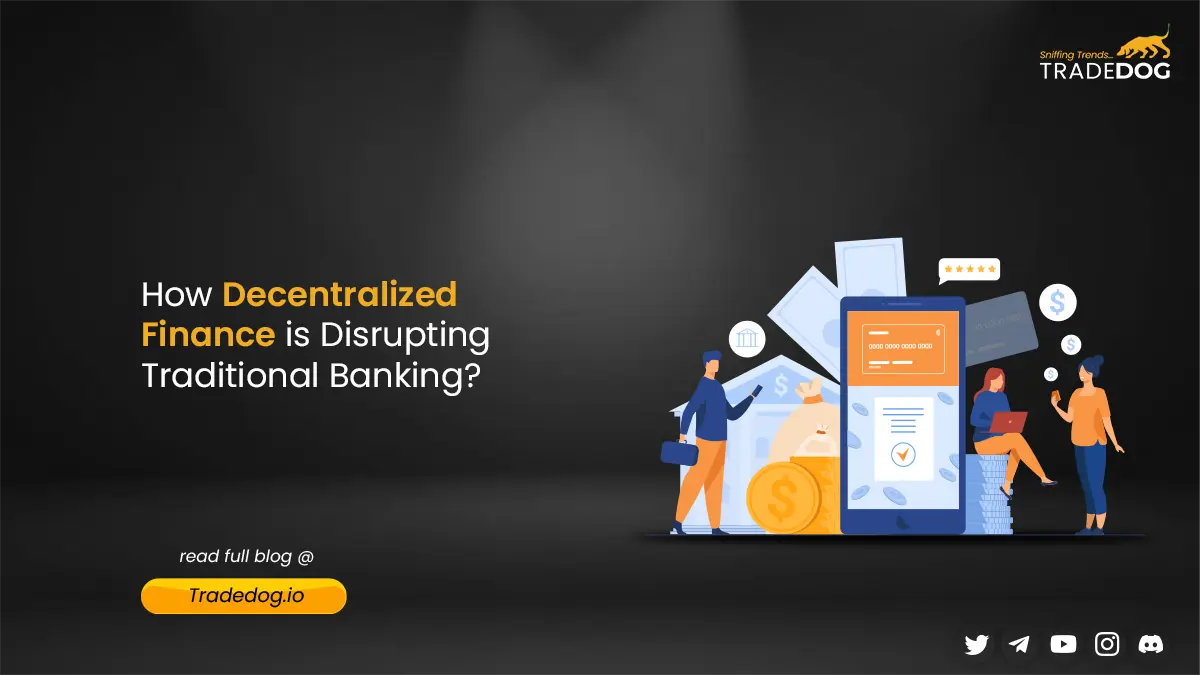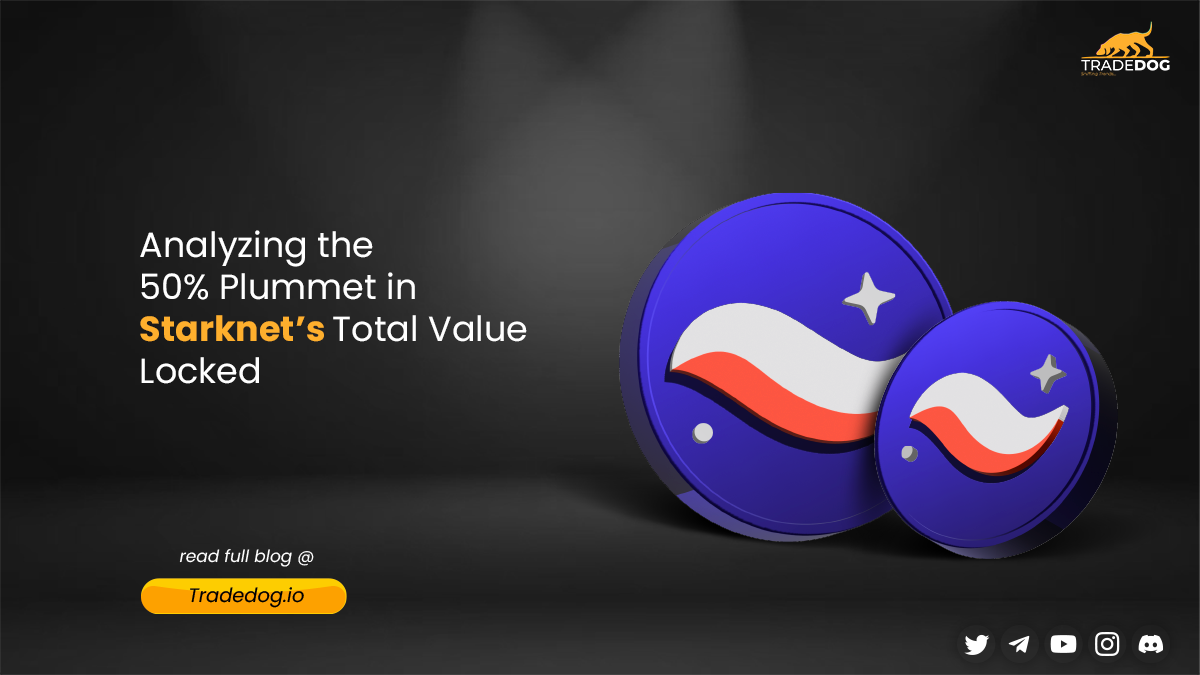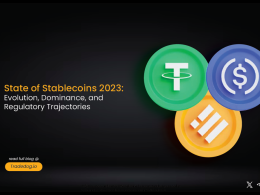Quick Links
- What is a Stablecoin?
- How do Stablecoins Maintain Their Peg?
- What is Stablecoin Depegging and Why Does it Happen?
- Stablecoin Depegging: Market Forces, User Behaviour, and Arbitrage Opportunity
- The Impact of Stablecoin Depegging
- Instances of Stablecoin Depegging
- How can the Stablecoin Depegging be Avoided?
Stablecoins emerged to counter cryptocurrency volatility, offering consistent values tied to traditional currencies for payments, trading, and smart contracts. Mechanisms include fiat or crypto collateralization, algorithms, and tangible asset backing. Depegging– when a stablecoin’s value deviates from its peg – can arise from imbalances, technical glitches, manipulation, or trust loss. This affects investors, users, and the wider crypto landscape, causing instability. Still, depegging opens arbitrage opportunities. Mitigation involves robust management, real-time monitoring, transparency, and collaboration. Striking a balance between innovation and stability is essential as the cryptocurrency ecosystem evolves.
What is a Stablecoin?
The main inherent drawback of the cryptocurrency market is the volatility it has. The value of investments can deviate from 60-70% daily. This presented a challenge for traders, investors, and regular users for using cryptocurrency in everyday transactions. One solution to the problem of volatile cryptocurrency values is the use of stablecoins. These coins maintain a stable value and are linked to a traditional currency. The main idea behind stablecoins is to provide a digital asset that retains a consistent value over time, making it more suitable for various financial applications such as payments, trading, remittances, and smart contracts.
Stablecoins aim to combine the advantages of cryptocurrencies, like fast and borderless transactions, with the stability of traditional fiat currencies. They maintain a value correlated with a specific asset, generally a currency like USD or Euro. They typically carry a 1-to-1 peg with the given currency. This is called the “pegging” of stablecoin to a currency. For example, USDT has a 1-to-1 peg with the US Dollar.
How do Stablecoins Maintain Their Peg?
Stablecoins must maintain their peg to maintain their utility of acting as a safe asset. They maintain this through the following ways:
Fiat Collateralization
In this approach, the stablecoin issuer holds a reserve of traditional fiat currency (e.g., USD, EUR) in a bank account or custodial institution for every stablecoin issued. The reserve guarantees that the stablecoin can be redeemed for its pegged value.
Unofficial but frequent audits known as attestations are conducted to verify that the amount of fiat currency held in reserve matches the number of stablecoins in circulation. This ensures that the stablecoin is fully backed and maintains its peg. World’s biggest stablecoin by market capitalization-USDT works on this mechanism.
Crypto-Collateralization
Individuals deposit a specific quantity of an alternate cryptocurrency as a safeguard to obtain stablecoins. The deposited cryptocurrency’s assessed value usually surpasses the stablecoins’ value, creating a cushion against fluctuations in market prices.
In instances where the value of the deposited cryptocurrency drops below a predefined threshold due to market instability, automated protocols are activated to trigger the sale of the deposited cryptocurrency. This process guarantees that the stablecoin’s value remains closely aligned with its intended value. DAI, the stablecoin of MakerDAO, works on this mechanism.
Algorithm
Algorithmic stablecoins employ smart contracts and algorithms to manage the number of stablecoins available for use. Whenever the stablecoin’s value strays from its target value, the algorithm modifies the supply by creating or removing existing coins. External data sources known as oracles are utilized to gain immediate knowledge about the anchored asset of the stablecoin, such as exchange rates. The algorithm relies on these data inputs to ascertain the appropriate moments for making alterations to the supply.
Commodity Backing
These stablecoins derive their value from tangible assets such as gold or silver. The stablecoin’s valuation is intricately linked to the worth of the underlying asset, establishing stability through the inherent value of the asset. Comparable to stablecoins supported by fiat currency collateral, independent audits validate the quantity of the asset held in reserve. This process guarantees that the stablecoin’s valuation continues to align with the underlying asset’s value.
What is Stablecoin Depegging and Why Does it Happen?
Stablecoin depegging refers to the deviation of the actual value of a stablecoin from its pegged value. Various factors can lead to the deviation of the stablecoin from its intended value to its real value.
Some of the reasons are as follows:
- Market Demand and Supply Imbalances-In case of asset-backed stablecoins, sudden changes in demand or supply for the stablecoin can create imbalances that push the price away from the peg. For example, suppose there’s a sudden surge in demand for the stablecoin. In that case, the issuer might need to help maintain the peg if they can quickly acquire enough reserves.
- Lack of Adequate Reserves– If the issuer needs more of the pegged reserve asset to back the stablecoin’s total supply, users may lose confidence in the coin’s stability, leading to selling pressure and depegging.
- Technical Issues– Technical vulnerabilities, bugs, or smart contract malfunctions can expose the stablecoin to manipulation and cause its value to deviate from the peg. This is most prevalent in the case of algorithmic stablecoins.
- Market Manipulation– Large traders or malicious actors might engage in trading practices to exploit price differences between the stablecoin and its peg, triggering price deviations and depegging.
- Loss of Trust- If users lose trust in the issuer’s ability to maintain the peg due to transparency issues, governance problems, or other factors, they may start selling the stablecoin, leading to depegging.
- External Shocks- Economic crises, regulatory changes, geopolitical events, or global financial instability can impact the peg of a stablecoin, causing it to lose its intended value.
- Redemption Pressure- If a stablecoin offers a redemption mechanism where users can exchange the stablecoin for the underlying reserve asset, a sudden influx of redemption requests can strain the issuer’s ability to fulfill them, potentially leading to depegging.
- Loss of Network Confidence- For algorithmic stablecoins, if users lose confidence in the algorithm’s ability to maintain the peg, they may sell the stablecoin, causing it to deviate from the peg. The most famous example of this reason for stablecoin depegging can be the Luna crash of 2022.
Stablecoin Depegging: Market Forces, User Behaviour, and Arbitrage Opportunity
The depegging of the stablecoin defies its underlying utility of reserve of value with negligible volatility. This causes panic among the holders leading to large-scale selling of the stablecoin. This creates an imbalance between the supply and demand forces, with markets flooded with the given stablecoin. This further erodes its value.
However, this depegging creates very favourable arbitrage opportunities. The shifting of the stablecoin’s value below its pegged value opens up the opportunity for traders to buy it from the market at a price lower than ‘$1’ and then sell it to the issuer at the pegged price of ‘$1’. Similarly, if the price moves above the pegged value, the trader can buy it from the issuer and sell it in the market to make a profit. However, direct access to the issuer of the stablecoin is quite tricky. For example, in the case of USDT, a person should deposit at least $100,000 to transact directly with Tether.
The Impact of Stablecoin Depegging
Depegging of the stablecoin may lead to various impacts and implications on the cryptocurrency ecosystem and its stakeholders. The impact on major stakeholders can include-
1. Investors: Investors, believing in the long-term value of the stablecoin and thus holding them, might experience losses if a stablecoin loses its peg and its value drops significantly. Stablecoins are generally viewed as safe havens during volatile market conditions and as a means of preservation of capital until a lucrative opportunity presents itself. Erosion of value due to depgging can lead to loss of investor confidence.
2. Users: Users who rely on stablecoins for everyday transactions or remittances might face challenges if the value of their stablecoins fluctuates widely. Depegging could introduce uncertainty into these transactions, making it harder to predict the real purchasing power of the stablecoins they hold. This could discourage the use of stablecoins for daily transactions.
3. Traders: Traders often use stablecoins as a way to hedge against volatility in the crypto markets. If stablecoins depeg, traders might lose a reliable tool for managing risk. This could increase the complexity of trading strategies and lead to more cautious trading practices. However, depegging does present lucrative arbitrage opportunities for traders.
4. Exchanges and Platforms: Cryptocurrency exchanges and other platforms that offer stablecoin trading pairs might see reduced trading volumes and activity if the stability of the stablecoins is compromised. Moreover, the sudden depegging of a stablecoin could create operational challenges for these platforms, as they would need to adjust trading systems, liquidity pools, and risk management practices.
5. Regulators and Authorities: Stablecoin depegging could raise regulatory concerns, especially if the stablecoin’s value becomes highly volatile. Regulators may become more interested in overseeing stablecoin operations to ensure they are adequately backed, transparent, and not contributing to systemic risks in the financial ecosystem.
6. Crypto Ecosystem and Innovation: If a widely used stablecoin experiences a depegging event, it could impact the broader crypto ecosystem. Stablecoins are used as a bridge between the traditional financial system and the crypto space. A loss of trust in stablecoins could slow down the adoption of blockchain technology and innovative financial services that rely on stablecoins.
Depegging may lead to increased volatility in the markets which could have a ripple effect on other cryptocurrencies as well as investors would rush to liquidate their positions. This would lead to a domino effect causing a bloodbath in the markets. The overall market capitalization of the cryptocurrency may also decline as investors would more likely shift to traditional asset classes.
Instances of Stablecoin Depegging
UST
UST was the algorithmic stablecoin of Luna. Terra USD(UST) had a 1-to-1 peg with the US dollar. On May 7, 2022, approximately $2 billion of UST was taken off the Anchor protocol(the lending protocol of Terra, which at a point in time provided almost 20% annual yield). Several hundred million of it was liquidated. This led to UST losing its peg and coming down to $0.91. This presented an arbitrage opportunity for traders as they could exchange 1UST for $1 worth of Luna at any point. Thus, as a result, people started trading 90 cents worth of UST for $1 worth of Luna. This further increased UST’s selling pressure, causing the stablecoin to depeg even more.
USDC
USDC, the stablecoin of Circle, lost its peg on March 10, 2023, shortly after the collapse of the Silicon Valley Bank. The stablecoin held $3.3 billion of its $40 billion reserves in SVB. This led to speculation about the stablecoin’s inability to fulfill its reserve requirement, which led to a significant selling price in USDC. Users rushed to exchange their USDC for more reliable stablecoins like USDT. To stop the selling pressure, Circle CEO had to clarify that even in the case of 100% inability to recover funds from SVB, Circle would replenish its reserves through corporate resources and external capital.
How can the Stablecoin Depegging be Avoided?
Stablecoin issuers can take several steps to manage stablecoin depegging and mitigate its potential impact. While no strategy can eliminate the risk, these actions can help stabilize the situation and maintain user confidence:
1. Robust Reserve Management: Stablecoin issuers should maintain transparent and well-audited statements of reserves and regularly publish reports to demonstrate that the peg is adequately supported. The reserve should be diversified so that it is not affected by a single asset’s price fluctuations.
2. Real-time Monitoring and Alerts: Stablecoin issuers should implement monitoring systems to track market conditions and detect potential signs of instability early. Automated alerts can trigger timely responses when deviations from the peg are identified.
3. Communication and Transparency: Open and transparent communication with stakeholders is crucial. In the event of depegging, issuers should promptly inform users and investors, sharing the reasons and actions to address the situation.
4. Active Redemption and Buyback Mechanisms: Offer mechanisms that allow users to redeem stablecoins for the underlying assets or a premium above the devalued stablecoin value. Buyback programs should be implemented to stabilize the stablecoin’s value by purchasing tokens from the market.
5. Algorithmic Adjustments: Some stablecoin issuers use algorithms to adjust supply and demand to maintain the peg dynamically. Issuers can fine-tune these algorithms to ensure quicker responses to market fluctuations.
6. Stress Testing: Stablecoins’ resilience should be regularly tested to extreme price movements, including intense price fluctuations, to identify potential weaknesses and product market strategies.
7. Collaboration with exchanges: Stablecoin issuers should work closely with exchanges to ensure they are prepared for depegging events. Collaborative events can help manage the fallout and minimize disruption.
Conclusion
In the dynamic world of cryptocurrencies, stablecoin depegging can disrupt investor confidence, market stability, and regulatory equilibrium. As we’ve explored, this phenomenon’s impact extends to users, traders, and the broader crypto landscape. To safeguard against these risks, transparent reserve management, adaptive mechanisms, and collaborative efforts between stakeholders are essential. Striking a delicate balance between innovation and stability will determine the resilience of stablecoins in an ever-evolving digital economy.





